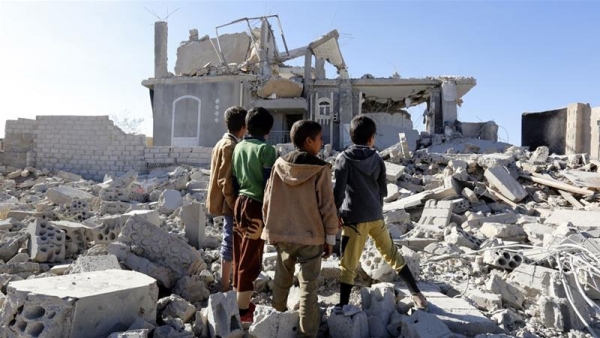The International Crisis Group (ICG) is an independent, non-profit, non governmental organisation working through field-based research and high-level advocacy to prevent and resolve atrocious conflicts.
With a death toll of 112.000 people and another 24 million in need of humanitarian assistance, the deadly civil war in Yemen has been a grim reality for six years. According to the ICG, while any attempt to reach a UN-brokered peace has come up against shifting military balance, regional intervention and territorial fragmentation, with COVID-19 Yemen conflict parties are faced with a stark choice: either endorse a suboptimal political settlement or protract a war with substantial human cost and no outright winners.
The report is based on an in-depth field research featuring more than 90 interviews carried out along the 2018-2020 period. The selected population belongs to several areas of conflict-ridden Yemen, such as the Red Sea Cost, the cities of Aden, Sanaa, Marib and Hadramawt. Additional interviews were conducted with pertinent actors in Egypt, Jordan, the Arab Gulf States and USA.
ICG explains that the greatest hindrance to a lasting peace settlement in Yemen is an outdated international approach to ending the conflict. Since the Yemen war’s eruption in 2014, when the Huthis, a Zaydi insurgent group supported by Iran, overtly defied the internationally recognized Hadi Government, the balance of power has gradually shifted in favour of the rebels. Nonetheless, UN Security Council Resolution 2216 adopted back in 2015 largely endorsed the Hadi Government and its Saudi Arabia ally’s war aims postulating Huthis surrender and handover of weapons and the return of Sanaa to governmental forces. From their side, backed by Iran, Huthis movement progressively consolidated its grip on North West Yemen and still ferociously compete to extend its territorial influence.
As ICG points out, the renewed balance of power in Yemen renders both the implementation of resolution 2216 very unlikely and the UN-led talks initiated in Kuwait outdated. To add complexity, from 2015 several alliances have unravelled, scattering the forces around five cantons of political and military control. In Yemen, besides the antagonism between the Hadi Government and the Huthis, new military realities emerged including the Southern Transitional Council (STC) and the non-aligned Joint Resistance Forces (JTF) operating under autonomous lines of command and control. Given the circumstances, ICG suggests that in order to reach a successful political settlement in Yemen two conditions are to be fulfilled.
First, the parties will need to be persuaded that it is in their own interest to abandon maximalist demands. While the Huthis are confident to have the upper hand on their adversaries, internal tensions within the movement suggest that their military advantage is not as clear-cut. Moreover, sticking to the narrative of “Saudi Aggression”, they insist that an agreement for peace should sideline new military realities and Hadi Government and thus be negotiated exclusively with this latter’s main ally, namely Saudi Arabia. According to ICG this strategy is implausible since the excluded parties will never step back from protecting their core interests. On the other hand, ICG notes that downsized in its ambitions, Hadi government should resign all its claims to Sanaa, stronghold of the rebels, and renounce to a fully surrender of its enemies.
Second, the fragmented battleground in Yemen demands a rethink of the overarching negotiation framework and the substance of an achievable agreement. As the shifting balance of power within the conflict demonstrates, the two-party settlement put forward by the UN in 2015 needs to be reconsidered as to ensure the buy-in of powerful groups such as the STC and the JTF.
In conclusion, ICG suggest what the UN should do to accelerate the peace process and finally end the suffering of Yemeni people.In this regard, any UN-brokered deal should not envision a settlement that mimics the terms of Resolution 2216 since it is no longer clear whether the instrument will lead to a lasting peace. According to ICG, before any representative of the factions is summoned for discussing peace, initial talks over a ceasefire and transitional settlement should encompass the most powerful military actors like the STC. Inclusivity may prevent any risk that decisions are perceived by factions as coercive, thus reducing the likelihood that the final agreement is upended.
To know more, please read:
Author: Gianmarco Italia; Editor: Barbara Caltabiano







